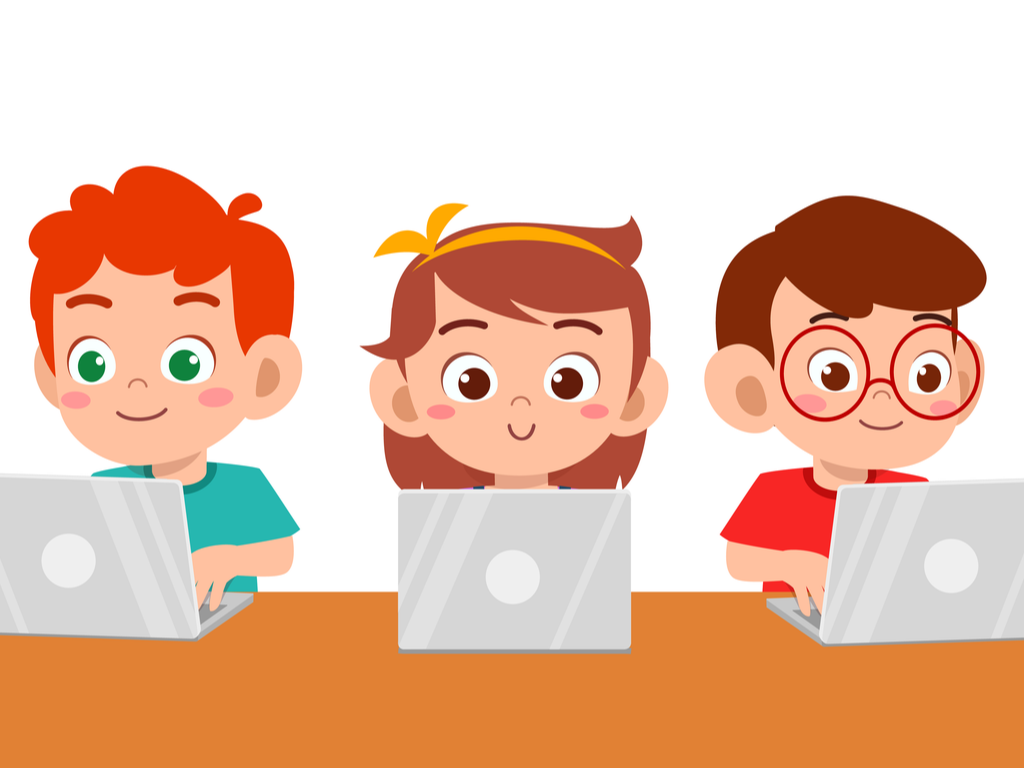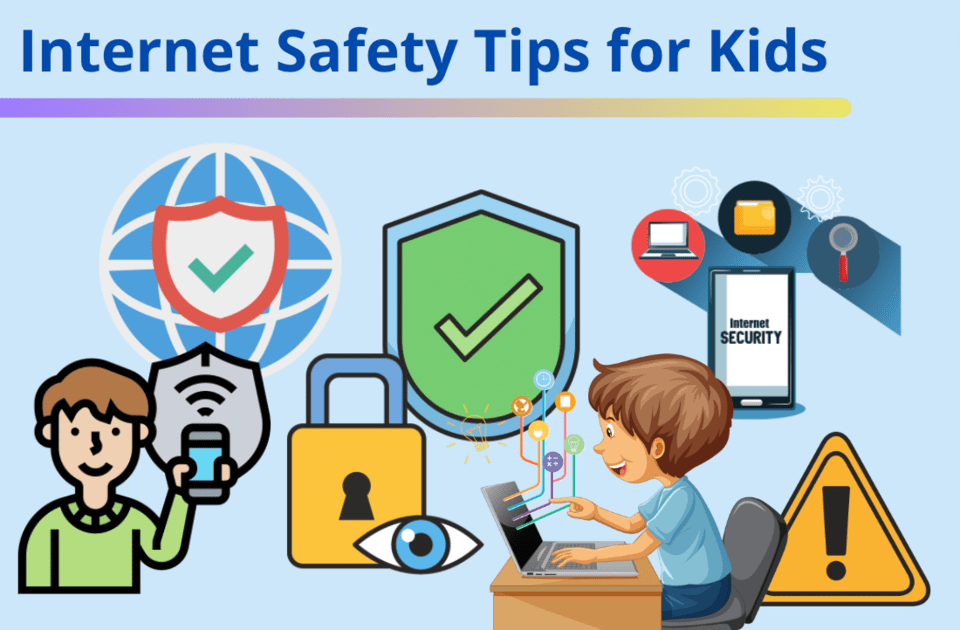Introduction:
As children’s internet use increases, keeping them safe online becomes a top priority for parents. In this blog post, we’ll cover online safety for kids, focusing on various age groups and learning activities, with seven key tips to help protect your children. Whether your child is attending traditional school or engaging in homeschooling, ensuring their online safety is crucial. We’ll also share free activities for kindergarten online and other educational apps that ensure safety while making learning fun.
Why Online Safety for Kids Matters?
The internet offers incredible opportunities for learning and social interaction, but it also comes with risks. For kids, exposure to inappropriate content, cyberbullying, and data breaches are serious concerns. Teaching online safety for kids early is essential to guide them toward responsible and safe online behavior.

1. Free Activities for Kindergarten Online:
Young children learn best through interactive play. Thankfully, there are numerous free online activities for kindergarten that engage them in learning while keeping them safe. Websites offering educational games, reading exercises, and alphabet activities are great for keeping children entertained while learning in a secure environment.
Best Platforms for Safe Online Kindergarten Activities
- PBS Kids offers a collection of free games that enhance early learning skills.
- Starfall provides literacy and math games that are perfect for kindergarteners.
Parents should ensure that these platforms include privacy protections and age-appropriate content filters.
2. Engaging Online Activities for Students:
For older children, staying engaged in online learning can be a challenge. Online activities for students that incorporate interaction and creativity help maintain focus. Platforms like Kahoot and Google Classroom offer free online activities for students that foster participation and active learning while maintaining safety standards.

3. Activities to Engage Students in Online Learning:
Engaging students in online learning is key to making education more effective. Encourage activities that involve group work, creative projects, and interactive quizzes. Some examples include:
- Virtual group projects using tools like Google Docs or Zoom.
- Interactive quizzes using apps like Quizizz and Kahoot.
These activities to engage students in online learning not only boost educational outcomes but also help students stay connected with their peers in a safe online space.
4. Free Online Learning Activities for Kindergarten:
Incorporating fun and educational content for younger children is essential to keeping them engaged. Free online learning activities for kindergarten can help children build foundational skills in reading, math, and problem-solving. Ensure the activities you choose come from safe and well-monitored sources like:
- National Geographic Kids for interactive science games.
- ABCmouse for comprehensive learning tracks in literacy and numeracy.
Parents should always monitor usage and set time limits to ensure that kids don’t spend too long on these activities.
5. Best Online Schools for Active Duty Military Families:
For military families, education can be disrupted by frequent relocations. Finding the best online schools for active duty military ensures continuity in education while offering a safe and secure learning environment. Some of the top schools for military families include:
- K12 – a tuition-free online public school program that offers personalized learning.
- Connections Academy – a free online public school for grades K-12 that provides strong support systems for military families.
These schools offer a reliable and safe option for children of military personnel, allowing them to continue their education no matter where they are located.
6. Internet Safety for Teens and Younger Kids:
As children grow older, their use of the internet changes. Internet safety for teens becomes a significant concern, especially as they start engaging with social media platforms. Parents should encourage open conversations about privacy, appropriate online behavior, and the dangers of cyberbullying.
For younger children, internet safety focuses more on understanding basic rules, like not talking to strangers online or sharing personal information. Use Internet Safety for Kids presentations to teach them the dos and don’ts of using the internet.
Internet Safety for 10-Year-Olds
At this age, kids become more independent online. They may be using online games or educational apps, so it’s important to:
- Set parental controls on devices.
- Teach them about privacy settings on games and apps.
Internet safety for 10-year-olds should focus on awareness of sharing personal information, identifying suspicious behavior, and safe online interactions.

Why Open Communication Is Crucial in Cyber Parenting?
In today’s digital age, fostering open communication is a crucial aspect of cyber parenting. By maintaining honest discussions with your children about their online activities, you can help them navigate the internet safely. Topics to cover include:
- Safe passwords and how to create them.
- Recognizing online threats such as phishing scams or cyberbullying.
Establishing trust through communication is vital to helping your children make safe online choices.
Conclusion:
Ensuring online safety for kids is crucial in today’s digital world. By following these tips, parents can help protect their children while also providing them with fun and educational resources like free activities for kindergarten online and preschool activities online games. Engaging online activities for students and free online learning activities for kindergarten offer a safe space for children to learn and grow.
For families with military backgrounds, finding the best online schools for active duty military ensures consistent, safe learning. Prioritizing internet safety for teens, 10-year-olds, and younger children through open communication and tools like an Internet Safety for Kids presentation is key to building a safer online environment.
FAQS:
How to monitor children’s online activity?
Parents can monitor their children’s online activity by using parental control software, setting up content filters, and regularly checking browsing history. Open communication about internet use and setting clear boundaries also help ensure kids stay safe online.
What is online safety for children?
Online safety for children involves protecting them from harmful content, cyberbullying, and privacy breaches while they use the internet. It includes teaching kids safe browsing habits, monitoring their online behavior, and using age-appropriate privacy settings.
Why should parents monitor their children’s online activities?
Parents should monitor their children’s online activities to protect them from inappropriate content, online predators, and cyberbullying. It helps ensure a safe digital environment and fosters responsible internet use.
How can parents monitor their children’s internet usage?
Parents can monitor internet usage through parental control apps, setting up device usage limits, and regularly reviewing browsing history. Encouraging open conversations about safe internet habits also plays a vital role in monitoring.
External Resources:

Empowering parents to raise happy, confident kids. Get practical parenting tips and advice on our blog, Smart Parent Guides.
